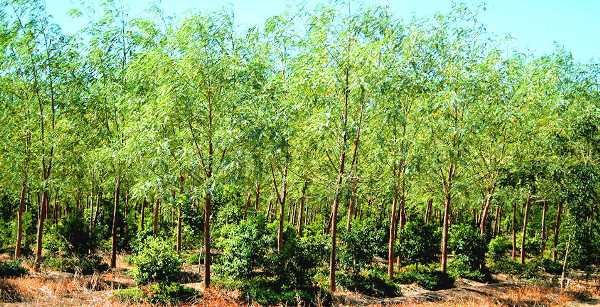Sale!
Chandan
Original price was: ₹550.00.₹500.00Current price is: ₹500.00.
The Chandan tree, also known as the Sandalwood tree, primarily refers to two species: Santalum album (Indian Sandalwood) and Santalum spicatum (Australian Sandalwood).
Description
The Chandan tree, also known as the Sandalwood tree, primarily refers to two species: Santalum album (Indian Sandalwood) and Santalum spicatum (Australian Sandalwood). Here is a detailed description of the Chandan tree:
Botanical Characteristics:
- Scientific Name: Santalum album (Indian Sandalwood), Santalum spicatum (Australian Sandalwood)
- Family: Santalaceae
- Common Names: Sandalwood, Chandan (Hindi), Sandalo (Spanish), Santal (French)
- Habitat: Native to the Indian subcontinent, particularly southern India, and also found in Australia, Indonesia, and other parts of Southeast Asia.
- Growth: Typically slow-growing. Indian Sandalwood trees can reach up to 20 meters (65 feet) in height, while Australian Sandalwood trees are shorter, usually around 4 meters (13 feet) tall.
Physical Description:
- Leaves: Simple, opposite, elliptic to lanceolate leaves. They are green, shiny, and smooth with a leathery texture.
- Bark: The bark is dark brown to reddish-brown and becomes rough and fissured as the tree matures.
- Flowers: Small, inconspicuous, and typically reddish-purple to brownish in color. They grow in clusters.
- Fruit: A small, globular drupe that turns black when ripe, containing a single seed.
Wood and Aroma:
- Heartwood: The inner wood, known as heartwood, is the most valuable part. It is yellow to brown, dense, and aromatic.
- Fragrance: The wood emits a long-lasting, sweet, warm, and woody fragrance. The scent intensifies as the wood ages.
Uses:
- Essential Oil: Sandalwood oil is extracted from the heartwood and used in perfumes, cosmetics, and aromatherapy.
- Traditional Medicine: In Ayurvedic and traditional Chinese medicine, sandalwood is used for its purported anti-inflammatory, antiseptic, and astringent properties.
- Religious and Cultural Significance: Widely used in religious rituals, meditation, and ceremonies in Hinduism, Buddhism, and various other cultures. Sandalwood paste is applied to the body and used in carvings and artifacts.
Conservation Status:
- Threats: Over-harvesting, habitat loss, and illegal logging have significantly reduced the population of wild sandalwood trees.
- Conservation Efforts: Several regions have implemented conservation programs and regulations to protect and sustainably manage sandalwood resources.
Cultivation:
- Climate: Prefers tropical and subtropical climates with plenty of sunlight and well-drained soil.
- Propagation: Usually propagated from seeds, although cuttings can also be used.
- Parasitic Nature: Sandalwood trees are partial root parasites, meaning they form haustoria (specialized roots) to attach to the roots of nearby host plants for nutrients.
The Chandan tree’s cultural, medicinal, and economic importance has made it a highly revered and valuable species, necessitating efforts for its sustainable cultivation and conservation.







Reviews
There are no reviews yet.